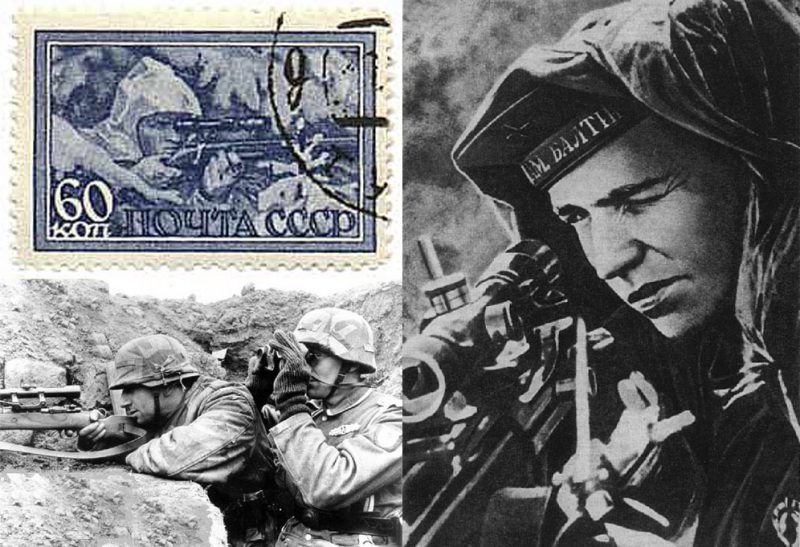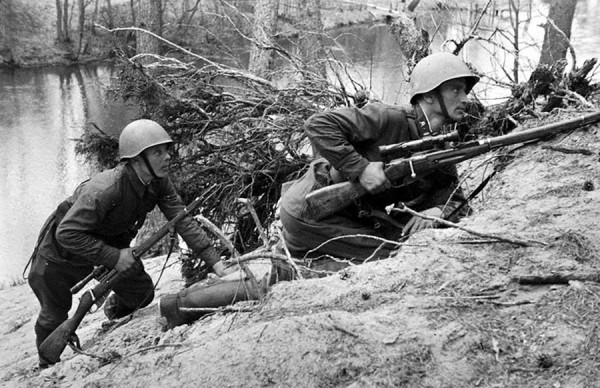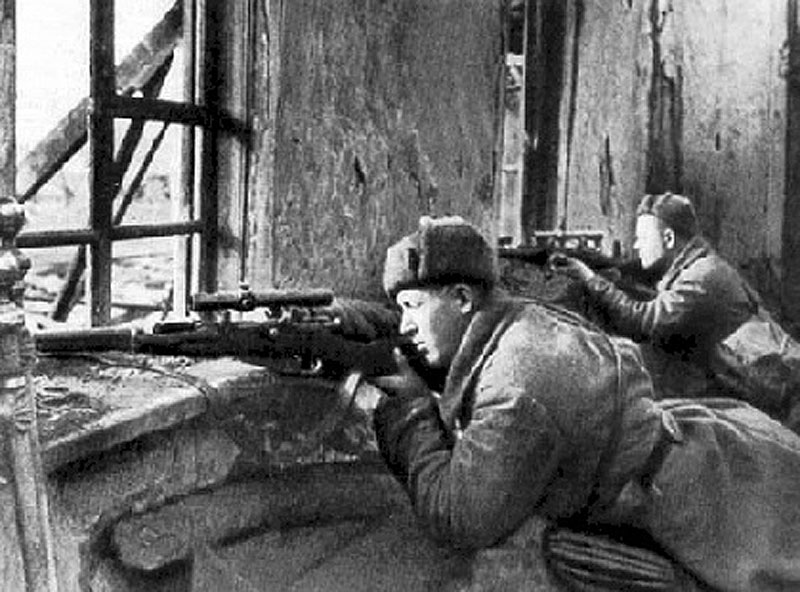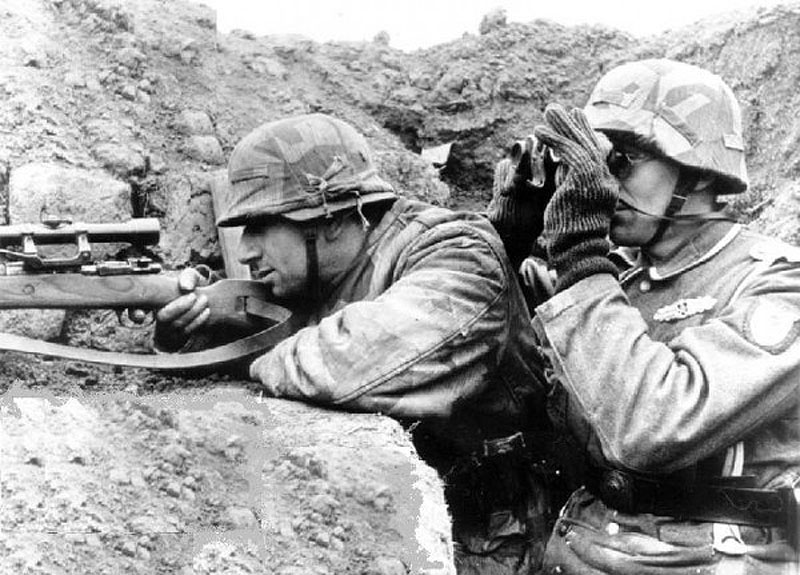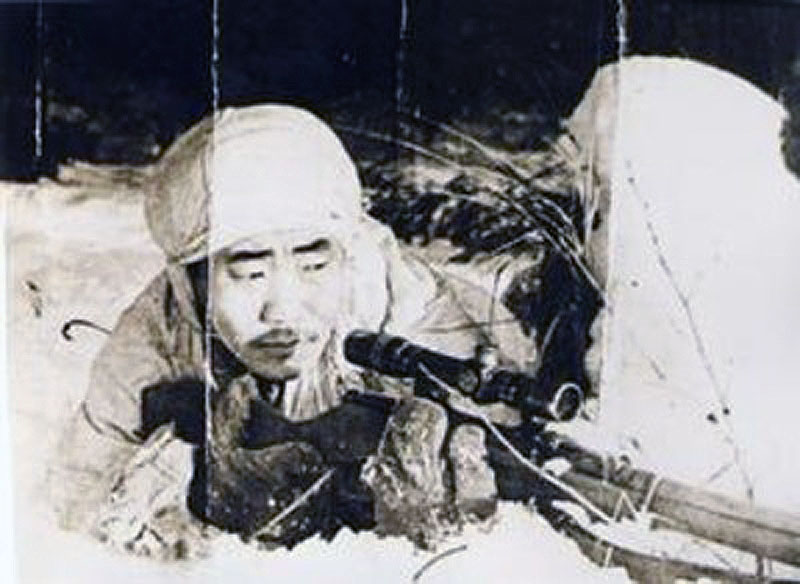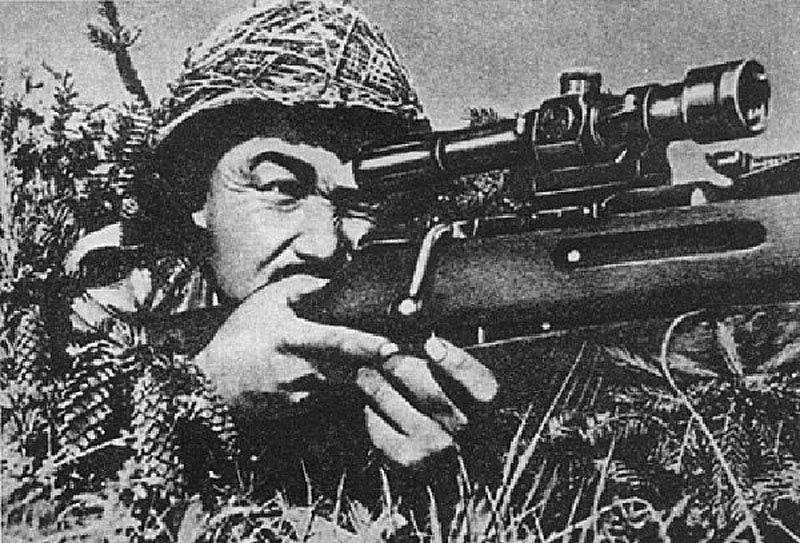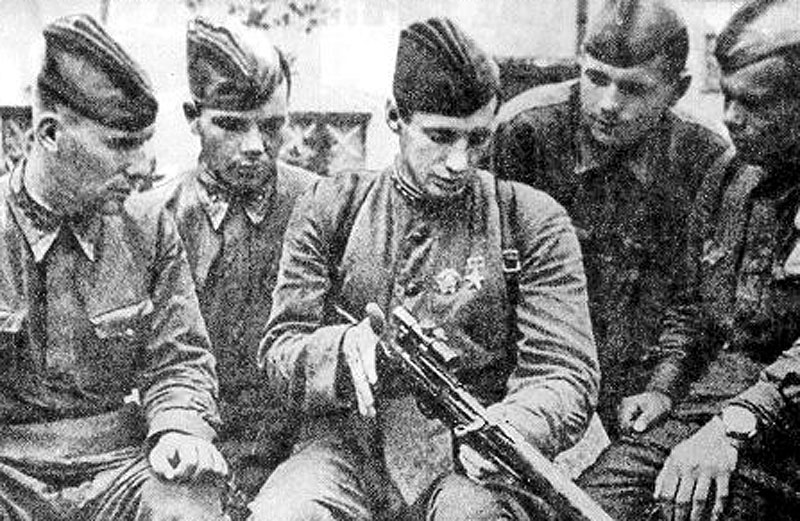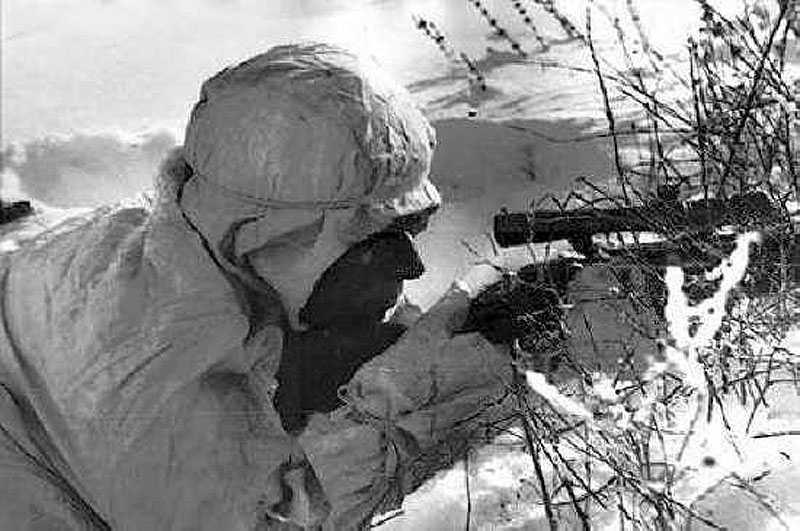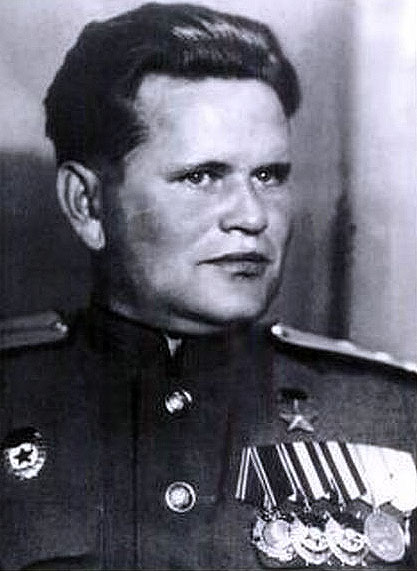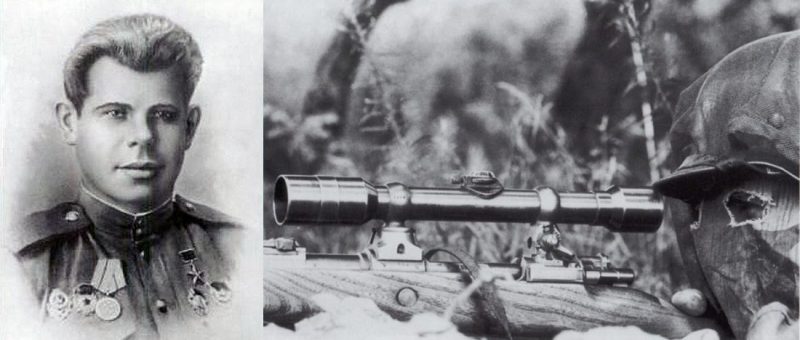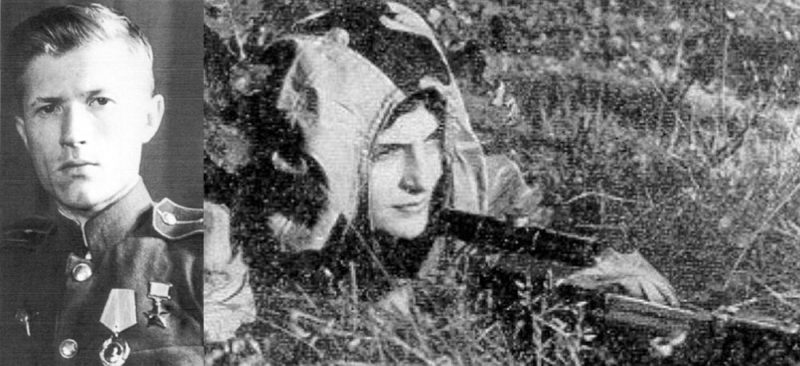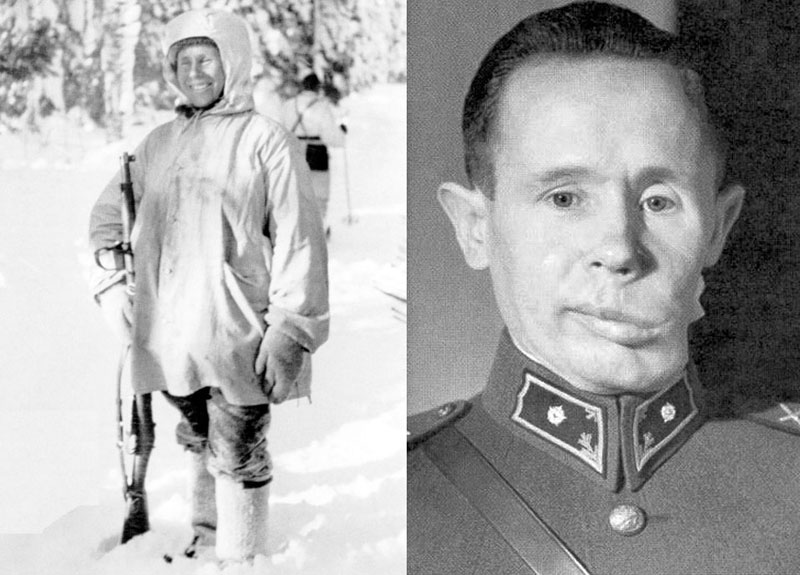A sniper is a highly trained sharpshooter who hits the target from concealed positions and some distances. A sniper generally operates alone with a special precision rifle and some sort of communication devices.
The word ‘sniper’ and the verb ‘to snipe’ originated among the troopers in the 1770s in British India where it was an extremely difficult task to hunt the migratory Snipe bird (Gallinago gallinago) due to its camouflage feather patterns and erratic flight patterns. The phrase ‘Going on a snipe hunt’ is used by experienced people to make fun of novices by giving them virtually an impossible task.
Images Used (from left): (1) A common Snipe bird (Gallinago gallinago) (2) Illustration of Snipe hunter by American artist Arthur B. Frost in 1895. The word ‘sniper’ originated in British India where a lot of skills were required by a hunter to be able to hunt the elusive bird.
In addition to sharpshooting, military snipers are also trained in infiltration, field craft, camouflage, surveillance, reconnaissance and target locating. During the WWII, the Soviet snipers played a remarkable role on the Eastern Front. The Russian snipers generally used the standard Mosin-Nagant 1891 model rifles with optical PU Scope (Scope short cut), 7.62×54mmR rifle cartridges, armor piercing B-30 shells, tracer bullets and calibrated incendiary (P3). They used to carry 120 rifle cartridges as combat load. Unlike other countries, women were also recruited by Soviet Union as snipers and there were over 2,000 women snipers operating in 1943. Soviet Union was also the only country that trained snipers on purpose in the decade leading up to WWII and their superiority in the following list of top 10 most lethal snipers of WWII is clearly visible. 9 out of 10 in this list are Soviet snipers and 1 Finnish sniper.
Image Used: Mosin-Nagant Model 1891/30 sniper rifle fitted with 3.5x optical PU scope
(10) Stepan Vasilievich Petrenko, Ukrainian Senior Sergeant (1922 to 1984), 422 Kills:
Stepan Vasilievich Petrenko was prominent among world’s best trained marksmen that USSR had developed. The confirmed 422 kills bear testimony to his precise skills in sharpshooting. He was awarded HSU (Hero of the Soviet Union), the highest distinction in the Soviet Union for heroic feats in services to USSR, on March 24, 1945.
Image Used: Ukrainian Sniper Stepan Vasilievich Petrenko during WWII
(9) Vasilij Ivanovich Golosov, Russian Lieutenant (1911 to 1943), 422 Kills:
During the WWII, 261 sharpshooters of the Union of Soviet Socialist Republics (USSR) were awarded the ‘distinguished sniper’ title. With 422 confirmed kills, Vasilij Ivanovich Golosov was also honored with this title. He was also among the 70 snipers shot dead in the war. Golosov was awarded the HSU posthumously on October 26, 1943.
Image Used: Russian Sniper Vasilij Ivanovich Golosov in action during WWII
(8) Fyodor Trofimovich Dyachenko, Ukrainian Senior Sergeant (1917- ), 425 Kills:
The ‘sharpshooters’ movement’ began in Soviet Union in 1932 under the supervision of top ranked Soviet politician and military officer Kliment Voroshilov. To take the long ranged advantages, to eliminate enemy leaders and other important targets of opportunity, the Soviet military strategists resorted to train hundreds of thousands of sharpshooters during WWII. Fyodor Trofimovich Dyachenko was one of those trainees who became a master of sharpshooting. The Ukrainian hero with 425 confirmed kills, received the Distinguished Service Cross for outstanding heroism in military operations against armed enemy. Dyachenko was awarded HSU on February 21, 1944.
Image Used: Ukrainian Sniper Fyodor Trofimovich Dyachenko during WWII
(7) Fyodor Matveyevich Okhlopkov, Yakut (Sakha, Russia) Sergeant (1908 to 1968), 429 Kills:
Fyodor Matveyevich Okhlopkov was a revered Soviet sniper with 429 WWII kills. He was an ethnic Yakut, born in the Krest-Khaldzhay village in the Sakha Republic in Far Eastern Soviet Union. It is said that, Fyodor and his brother were both enlisted in the Soviet Red Army together. His brother was killed in a combat. An infuriated Fyodor swore to avenge his brother’s death and went on to achieve 429 kills as a sniper and more with a machine gun. His commander would often sent him out alone with automatic weapons to repulse enemy attacks and the Yakut eliminated the Germans like a farmer cutting the grass with a scythe. Okhlopkov achieved well over 1,000 enemy kills in total using any type of weapon. On June 23, 1944, Sergeant Okhlopkov was hit in the chest while participating in an assault at Vitebsk in Belarus and was almost killed. This was his twelfth major wound during combat and made him spend months in hospital recovering from it. It ended his career and he was discharged from the military at the end of the war.
Initially Okhlopkov was being ignored to be considered for the highest Soviet honor despite being a top sniper in the Red army and there were claims that this was due to his ethnicity. However, Okhlopkov was decorated as HSU on June 5, 1965. He was also given the Order of Lenin and in 1974, a cargo ship was named after him.
Image Used: Yakut Sniper Fyodor Matveyevich Okhlopkov during WWII
(6) Mikhail Ivanovich Budenkov, Russian Sergeant (1919- ), 437 Kills:
Snipers were such an important part of the Soviet army during WWII that, typically in any infantry or reconnaissance platoon, at least one sniper could be found. Budenkov was a successful sniper with 437 kills. He also killed many enemy soldiers using machine guns. He was awarded HSU on March 24, 1945 for his valiant efforts as a Soviet sniper.
Image Used: Russian Sniper Mikhail Ivanovich Budenkov during WWII
(5) Vladimir Nikolaevich Pchelintsev, 456 Kills:
Vladimir Nikolaevich Pchelintsev was among the skilled and savvy snipers of Soviet Union who achieved 456 kills. He was not an HSU. As it was difficult to verify a kill with versatile operations tactics carried out by different snipers. The kills were generally confirmed by the spotter of the sniper during a combat. Generally, two men work in a sniper team- spotter and sniper. They take turns to avoid eye fatigue. Those top snipers who were not decorated as HSU might be due to not having a spotter with them to confirm total number of enemy kills during the war.
Image Used: Soviet Sniper Vladimir Nikolaevich Pchelintsev during WWII
(4) Ivan Nikolayevich Kulbertinov, 489 Kills:
Soviet sniper Ivan Nikolayevich Kulbertinov was another less celebrated individual like Vladimir Nikolaevich Pchelintsev. Kulbertinov also was not decorated as an HSU. With 489 kills, he makes into the list of top 10 most lethal snipers of WWII.
Image Used: Soviet Sniper Ivan Nikolayevich Kulbertinov in action during WWII
(3) Nikolay Yakovlevich Ilyin, Russian Sergeant Major, 494 Kills:
The 2001 Hollywood movie ‘Enemy at the Gates’ based on William Crag’s book ‘Enemy at the Gates- the Battle for Stalingrad’ was made about Vasily Zaytsev, famous Russian sniper and Hero of the Soviet Union (HSU) during WWII. The film portrays the events of Battle of Stalingrad between 1942 and 1943, Starring Jude Law, Ed Harris and Rachel Weisz. Though Zaytsev was not one of the top Soviet snipers, he scored an estimated 225 kills, including 11 snipers within two months during the Battle of Stalingrad between 1942 and 1943.
Zaytsev was a son of a peasant, born in 1915 in Chelyabinsk. When he started the war in 1942, he started in the Rifle Regiment. His commanders noticed his marksmanship as a rifleman when he killed 30 Germans. When a good sniper starts to take a large toll, the opposition party generally would deploy their own sniper to counter and eliminate the menace. Hence the sniper duel scenario arises. However the film exaggerated the duel between a German top sniper and Zaytsev.
Zaytsev sustained serious injuries including an injury to his shooting eye in January 1943. His eyesight was saved by a skilled surgeon but he was not allowed to return to battle field as a sniper. He was made a sniper trainer. Zaytsev trained 28 snipers and wrote a couple of textbooks on the art of sniping. He finished the war as a Captain and after war worked in a textile factory in Kiev, Ukrain. He died on December 15, 1991.
Image Used: Soviet Sniper Vasily Zaytsev, who was decorated as an HSU
Though a movie has never been made about deadly marksman Sergeant Major Nikolay Yakovlevich Ilyin, his 494 kills made him equally important in Red Army. Ilyin was a sniper in the 50th Guards Rifle Division and fought at Stalingrad. He was a locksmith before the war. He achieved 216 kills at Stalingrad and received the title HSU on February 8, 1943. This great sharpshooter died in action on August 4, 1943.
Images Used (From left): (1) A heavily retouched photograph of Soviet Sniper Nikolay Yakovlevich Ilyin dress as a Private, however, he was a Sergeant at that time. (2) Ilyin during WWII
(2) Ivan Mikhailovich Sidorenko, Russian Major (1919-1987), 500 Kills:
Soviet Union’s top sniper Ivan Mikhailovich Sidorenko was born into a peasant family on September 12, 1919 in Smolensk Oblast in Russia. He dropped out of school after 10th grade and then studied at an Art College. Later, he dropped out of the college too and was conscripted into the Soviet Army. As a Junior Lieutenant, he participated at the Battle of Moscow in 1941. He taught himself to snipe and bagged many enemy soldiers. Sidorenko’s commanders made him train fellow soldiers to snipe due to his efficiency on the battle field.
He fought on the 1st Baltic Front and planned the movements of the snipers. He achieved around 500 kills from 1941 until 1944. He also burned three tractors and a tank using incendiary bullets. Sidorenko was wounded three times and the third occasion in Estonia in 1944 was severe.
During his recovery period, he was awarded HSU on June 4, 1944. He retired as a Major and after the war became a foreman of a coalmine.
Images Used (From left): (1) Official portrait of top Soviet sniper Ivan Mikhailovich Sidorenko (2) Sidorenko in action during WWII
(1) Simo Häyhä, Finnish Vänrikki (Second Lieutenant) (1905-2002), 505 Kills:
Finnish marksman Simo Häyhä achieved the feat of acquiring highest number of confirmed sniper kills of 505 in any major war. Finland was a co-belligerent of the Axis powers during the WWII. The 505 soldiers eliminated by Simo were all from the Red Army and he was nicknamed ‘White Death’ by them.
Dressed in a snow camouflage, Simo tormented the Soviet combatants during the Winter War of 1939 to 1940. Häyhä achieved most of his kills in less than 100 days; 5 kills per day on an average during winter with fewer daylight hours. He used a Finnish version of the Russian Mosin-Nagant rifle, Civil Guard Mosin–Nagant Model 28. Its cartridge 7.62x53R was interchangeable with that of the Soviet Mosin-Nagant.
Simo preferred to use iron sights rather than the optical PU Scope and it gave him some advantages- (a) He presented smaller target for the enemy by using iron sights, because, while using a telescopic sight, a sniper must raise his head higher (b) He had increased accuracy as during winter, a telescopic glass can get foggy (c) Also sunlight reflected on the lenses of telescopic sights can reveal a sniper’s position.
He also used to keep snow in his mouth while sniping to reduce steamy breaths from mouth that could give away his position to enemy. The Red Army’s efforts to counter him was successful on March 6, 1940 when a Soviet soldier shot Häyhä in his lower left jaw and half of his cheek was missing. He regained consciousness after 6 days when USSR and Finland had already signed a peace treaty. Häyhä was promoted to Second Lieutenant and after the WWII he became a successful dog breeder and moose hunter. He received Cross of Liberty, Cross of Kollaa Battle and Medal of Liberty for his contribution in defending Finland. In 1998, he was asked how he had become such a terrific sharpshooter. His answer was ‘practice’. He died in Southeastern Finland in 2002.
Images Used (From left): (1) World’s top sniper in any major war, Simo Häyhä is being awarded the honorary rifle model 28 (2) Simo Häyhä in 1940s. After his 1940 wound, there was visible damage to his left cheek.
